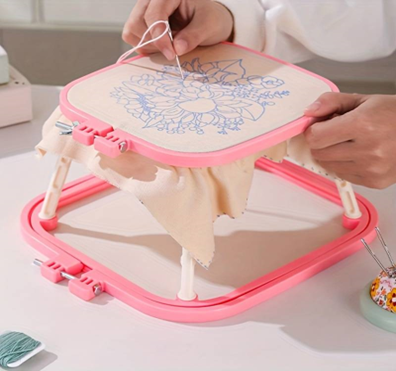Custom Embroidery Digitizing Services: Transforming Designs into High-Quality Stitch Files
Introduction of Custom Embroidery Digitizing Services
In the world of embroidery, precision and first-rate
are paramount. Whether for non-public tasks, branding, or large-scale
manufacturing, embroidery digitizing services play a essential role in
reworking artwork into extremely good stitch documents. Custom embroidery digitizing
Services involves converting pictures, emblems, or textual
content into virtual embroidery documents that machines can examine and execute
with wonderful accuracy.
This article delves into the intricacies of
embroidery digitizing, its significance, the process involved, and the way
companies and people can advantage from custom embroidery digitizing offerings.
Understanding Embroidery Digitizing
Embroidery digitizing is the technique of converting
an photo or design right into a stitch document layout that an embroidery
machine can interpret. Unlike trendy digital pix, embroidery documents
incorporate data approximately stitch kind, direction, density, and order,
ensuring that the embroidery system correctly replicates the layout on fabric.
Professional embroidery digitizing services use
specialized software program together with Welcome, Pulse, Hatch, or Brother
PE-Design to create these sew files. These applications permit digitizers to
manually assign stitch kinds and paths, ensuring highest quality, sturdiness,
and efficiency in production.
Why Custom Embroidery Digitizing is Essential
Custom embroidery digitizing offers several
benefits, making it an essential carrier for organizations, brands, and people
seeking excellent embroidery paintings.
Precision
and Accuracy: A nicely-digitized embroidery layout
ensures precise stitching, preventing misalignment and thread breakage.
Enhanced
Visual Appeal: Custom digitizing improves the
aesthetic best of embroidery through making sure smooth, professional-searching
designs.
Compatibility
with Embroidery Machines: Digitized documents
are tailor-made to particular embroidery machines, ensuring seamless execution.
Scalability:
Proper digitizing permits designs to be resized without compromising best.
Durability:
A nicely digitized design ensures lengthy-lasting embroidery, even after a
couple of washes.
The Embroidery Digitizing Process
1. Artwork Preparation
The first step in embroidery digitizing is making
ready the design. The art work need to be high-decision and formatted
efficiently to make sure a easy digitizing procedure. Simple and smooth designs
work satisfactory for embroidery, as complicated info may be difficult to copy
with thread.
2. Choosing the Right Stitch Types
Different sew kinds are utilized in embroidery
digitizing, relying at the layout's complexity and cloth type. The maximum not
unusual stitch types include
Satin Stitch:
Ideal for text and smooth curves, providing a glossy, raised impact.
Fill Stitch:
Used for large regions, ensuring durability and a textured finish.
Running Stitch:
A simple sew used for defining and best details.
3. Defining Stitch Direction and Density
The stitch direction and density have an effect on
the embroidery’s first-class and look. Professional digitizers regulate those
parameters to make sure even stitching, stopping thread bunching or free
stitches.
4. Assigning Underlay Stitches
Underlay stitches form the muse of embroidery,
stabilizing the material and preventing distortion. Different underlay
techniques are carried out primarily based on the material type and layout
factors.
5. Adjusting for Fabric Type
Not all fabrics behave the same manner at some stage
in embroidery. A digitizer considers the fabric’s texture, stretch ability, and
thickness to modify sew settings consequently. For example, delicate fabrics
require lighter sew density, while thicker substances need more potent underlay
stitches.
6. Test Stitching and Adjustments
Before finalizing the digitized report, a test run
is carried out to evaluate the layout’s fine. Any problems, including thread
breaks, gaps, or misalignment, are corrected before turning in the final sew
file.
File Formats Used in Embroidery Digitizing
Different embroidery machines require precise report
formats. Some of the most usually used embroidery document formats consist of
Choosing the suitable document layout guarantees
compatibility with the embroidery device, allowing clean production.
Industries Benefiting from Custom Embroidery Digitizing
Custom embroidery digitizing
services cater to a huge range
of industries and businesses, supporting them create specific and professional
embroidered products.
1. Fashion and Apparel
Fashion manufacturers use embroidery to add tricky
designs, monograms, and symbols to apparel and add-ons. High-first-rate
digitizing ensures that embroidery remains durable and visually attractive.
2. Corporate Branding
Companies use custom embroidery on uniforms,
promotional products, and company giveaways to beautify logo recognition. A
professionally digitized brand ensures a cultured and expert look.
3. Sports Teams and Clubs
Sports groups require embroidery digitizing for
jerseys, caps, and accessories. Precision in digitizing guarantees crew emblems
and player names look sharp and consistent across all apparel.
4. Promotional Products
Businesses use embroidered promotional gadgets like
hats, bags, and towels to put it up for sale their emblem efficaciously. Custom
digitizing ensures that logos and messages are accurately represented.
5. Personalized Gifts and Home Décor
Embroidery digitizing is likewise famous in growing personalize
presents, which includes monogrammed towels, embroidered cushions, and
ornamental wall artwork.
Choosing the Right Embroidery Digitizing Service
When deciding on an embroidery digitizing provider,
recall the subsequent elements
Experience
and Expertise: Choose a service with professional
digitizers who apprehend special fabric and embroidery techniques.
Software
and Technology: Ensure the provider uses advanced
digitizing software for precision and exceptional.
Turnaround
Time: Fast and efficient digitizing services are
important, in particular for corporations with tight deadlines.
File
Format Compatibility: The carrier must provide more than
one report codecs to house exceptional embroidery machines.
Customer
Reviews and Samples: Check preceding work samples and
consumer remarks to gauge the provider’s reliability.
Conclusion
Custom embroidery digitizing
services bridge the distance among innovative
designs and high-quality embroidered merchandise. By changing artwork into
unique sew files, digitizing guarantees that embroidery is visually appealing,
durable, and machine-compatible. Whether for fashion, corporate branding,
sportswear, or private items, professional embroidery digitizing is an
important step in accomplishing high-quality embroidery outcomes.
Investing in expert embroidery digitizing offerings
guarantees a continuing and splendid embroidery experience, making it a
treasured asset for businesses and individuals alike.




Comments
Post a Comment